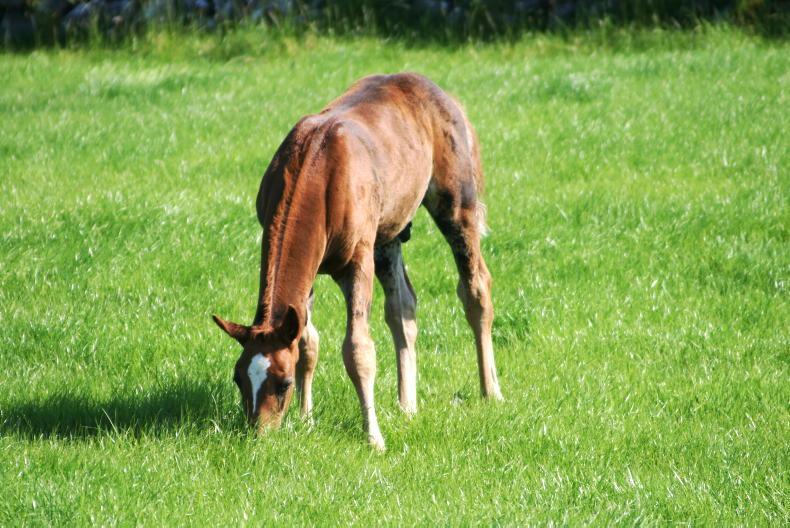I NEVER need an excuse to chat technical horse facts and there’s few better to do that with than the experts at the Irish Equine Centre (IEC). The IEC offers a comprehensive range of testing and analysis to provide the facts and figures equine farmers and owners need to make informed decisions on their farms. Soil test results used to take as much as five weeks to come back, but the ever forward-thinking IEC have bought an X-ray mineral analyser which can have your soil analyses back with you in just five days. Agricultural scientist and farm advisor Shane Browne of the IEC gave Horse Sense a look behind the scenes at how both grass and soil analysis are undertaken with the new machine and how this fast service can provide you with the statistics you need to appropriately fertilise your grassland or supplement your horse whilst you adjust the mineral content of your soil.
Head of environment and nutrition at the IEC, Alan Creighton, explained the no-brainer aspect of soil testing to me in a recent interview: “Not enough people in the horse industry soil test, and it’s cheap as chips. For around €100 you can have four fields soil sampled. It’s so much cheaper than just presuming your fields need two bags per acre of 10 10 20 or whatever you’ve just always used. The horse industry is a reactive sector, there needs to be a speedy service so breeders and equine farmers can add fertiliser in a targeted ration when it’s needed.”
Soil sampling is an important step in understanding soil nutrient requirements and soil analysis establishes fertility levels of major nutrients such as lime, phosphorous (P) and potassium (K). Knowing the farm’s soil fertility, field by field, is the first step to calculating fertiliser requirements, and controlling fertiliser costs.
There are lots of reasons to soil or grass test, some more obvious than others. A couple of examples of these less obvious reasons could be knowing that areas prone to flooding from rivers tend to be high in selenium which can affect the quality of a horses’ hooves. In such a case you’d need to make sure you’re not supplementing your horses with selenium as too much can be harmful. Another example is in soils with high levels of molybdenum which pulls copper from the soil, it wouldn’t be a good idea to lime the land as this raises the pH which in turn increases the availability of the molybdenum.
The Irish Equine Centre supports breeders and equine farmers in various ways and when it comes to grassland management it’s a great place to start for equine farmers both in Ireland and in Northern Ireland. IEC currently run an incredibly useful Land Assessment For Stud Farms programme for €350 or in a helpful initiative from Irish Thoroughbred Breeding Association (ITBA) a subsidised €150 (ex VAT) for its members.
For that, an IEC scientist will visit your farm to carry out assessment and take the necessary samples and will provide a full written report together with follow on advice based on the findings.
Included in the tests are composite grass sample testing, minerals and antagonistic minerals (minerals which when too abundant work negatively to draw out good minerals from the soil). The package also includes water sampling for bacteriology and a mineral profile plus soil analysis for PK pH and lime requirement (other soil tests can be taken on request also).
IEC also offer a comprehensive Stud Farm Hygiene Package which includes nursery paddock assessment and testing (more on that package in next week’s Spring Cleaning Feature).
Bespoke targeted fertilising is better for the environment, and for your grass and perhaps most pertinent in the current climate, a whole lot cheaper. It’s just a case of making soil and grass analysis a regular part of your grassland management.


 This is a subscriber-only article
This is a subscriber-only article
 It looks like you're browsing in private mode
It looks like you're browsing in private mode













SHARING OPTIONS: